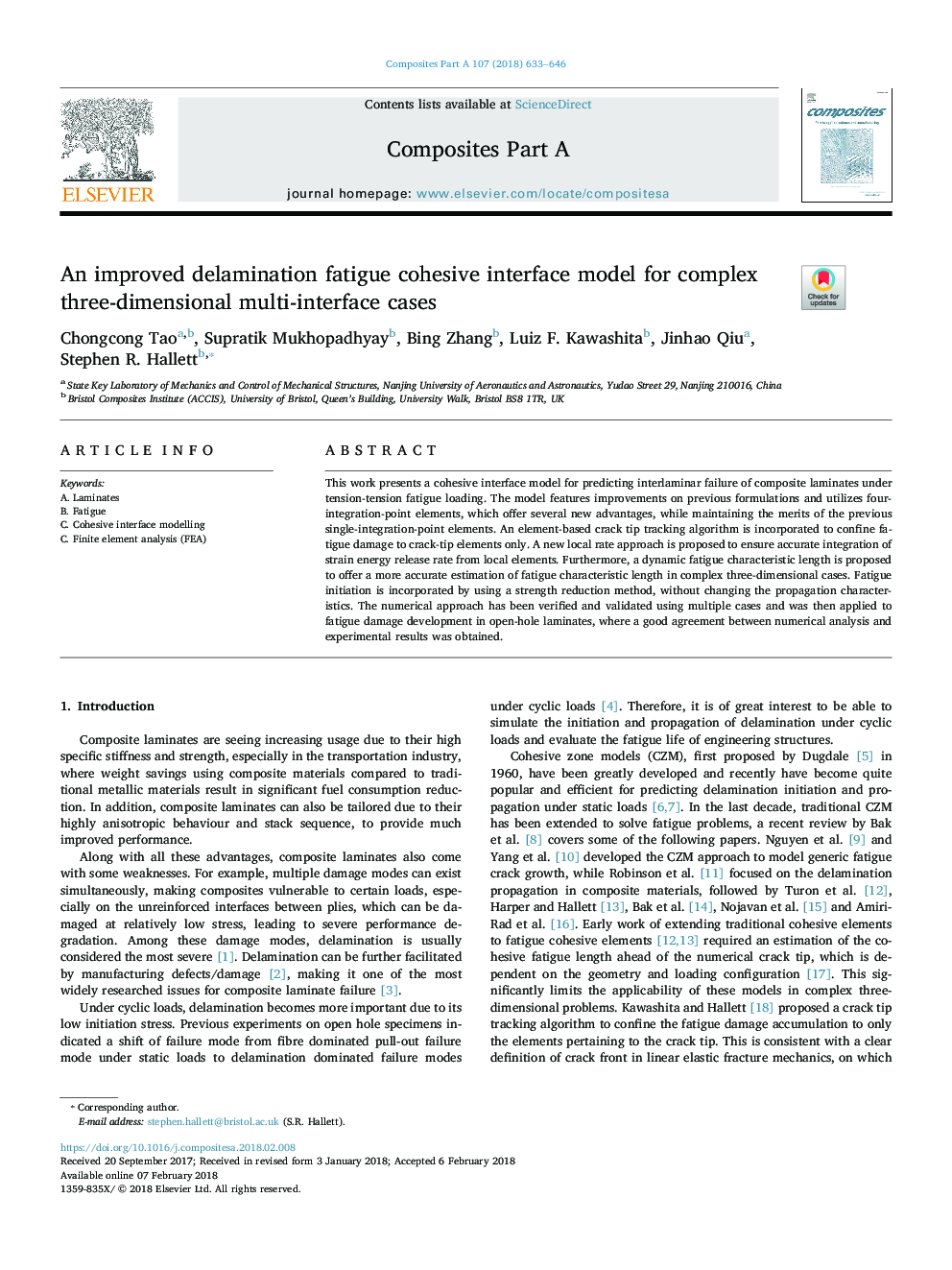| Article ID | Journal | Published Year | Pages | File Type |
|---|---|---|---|---|
| 7889921 | Composites Part A: Applied Science and Manufacturing | 2018 | 14 Pages |
Abstract
This work presents a cohesive interface model for predicting interlaminar failure of composite laminates under tension-tension fatigue loading. The model features improvements on previous formulations and utilizes four-integration-point elements, which offer several new advantages, while maintaining the merits of the previous single-integration-point elements. An element-based crack tip tracking algorithm is incorporated to confine fatigue damage to crack-tip elements only. A new local rate approach is proposed to ensure accurate integration of strain energy release rate from local elements. Furthermore, a dynamic fatigue characteristic length is proposed to offer a more accurate estimation of fatigue characteristic length in complex three-dimensional cases. Fatigue initiation is incorporated by using a strength reduction method, without changing the propagation characteristics. The numerical approach has been verified and validated using multiple cases and was then applied to fatigue damage development in open-hole laminates, where a good agreement between numerical analysis and experimental results was obtained.
Related Topics
Physical Sciences and Engineering
Materials Science
Ceramics and Composites
Authors
Chongcong Tao, Supratik Mukhopadhyay, Bing Zhang, Luiz F. Kawashita, Jinhao Qiu, Stephen R. Hallett,
